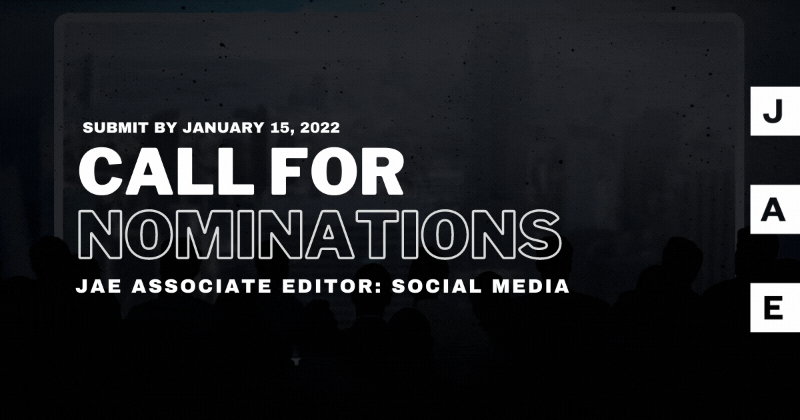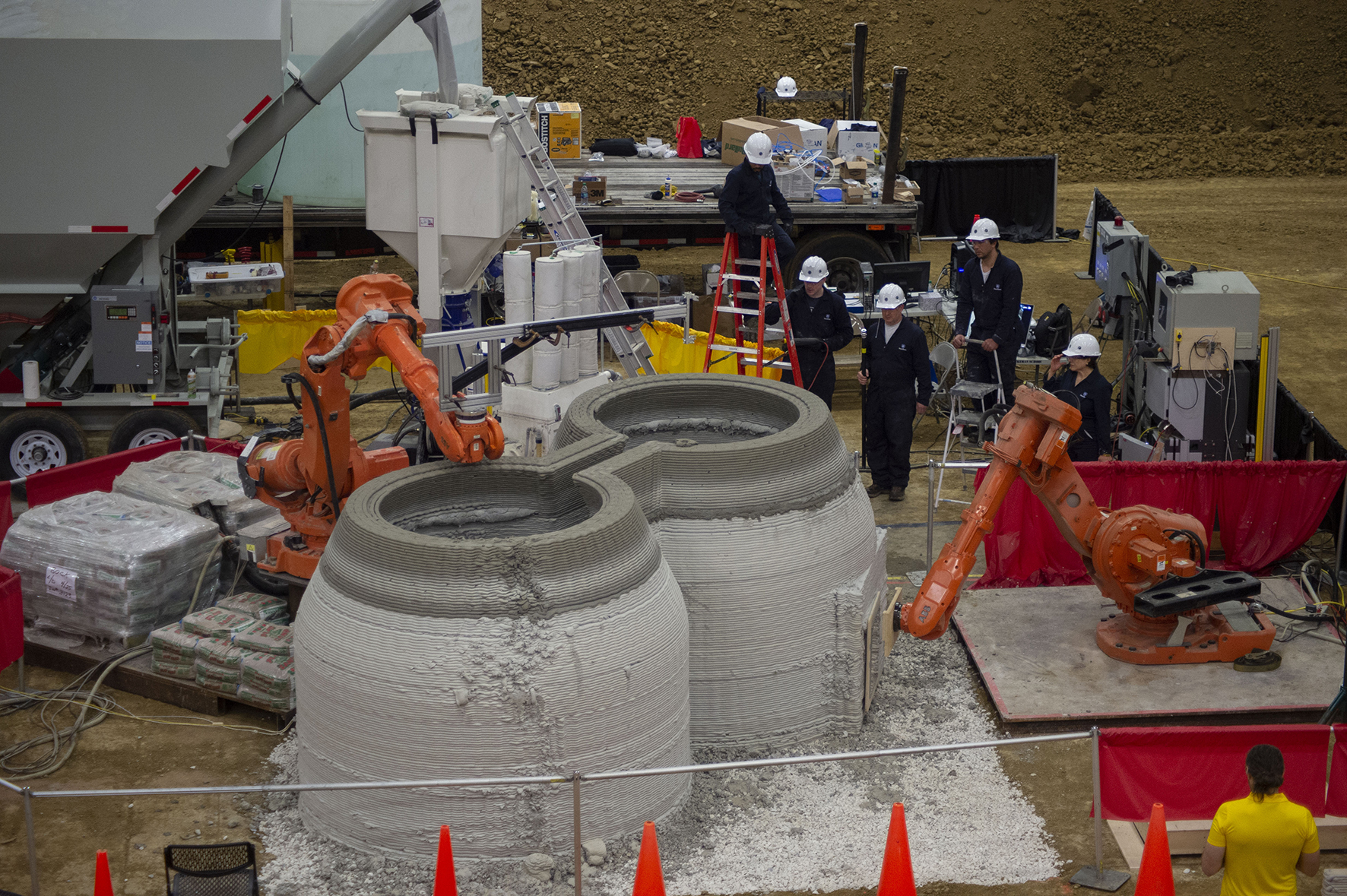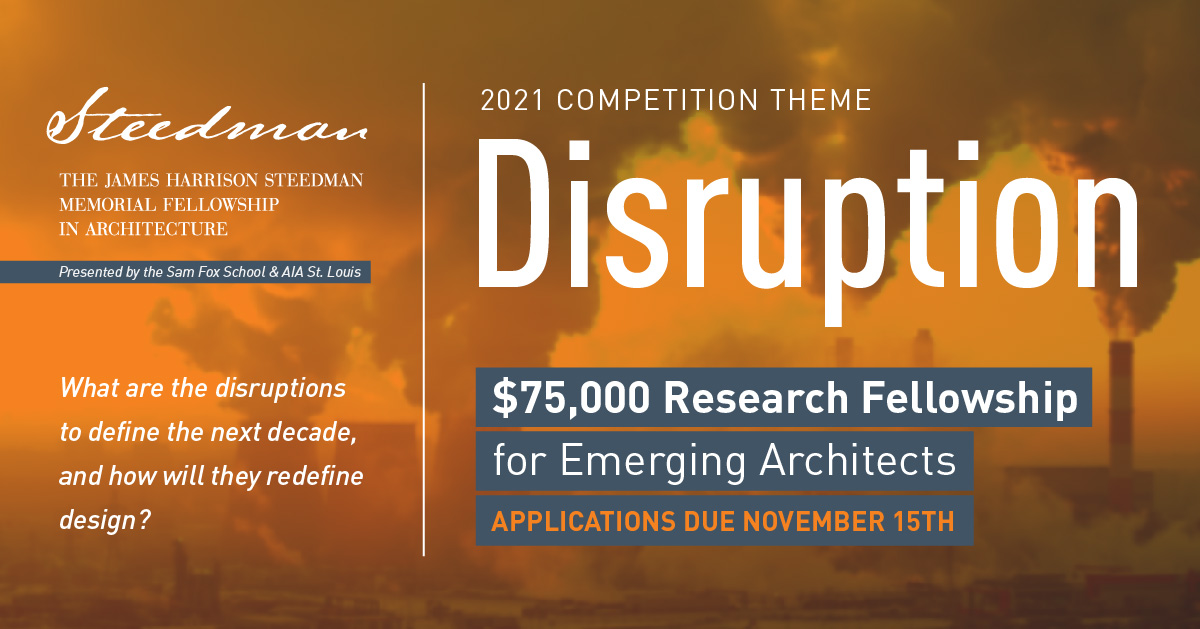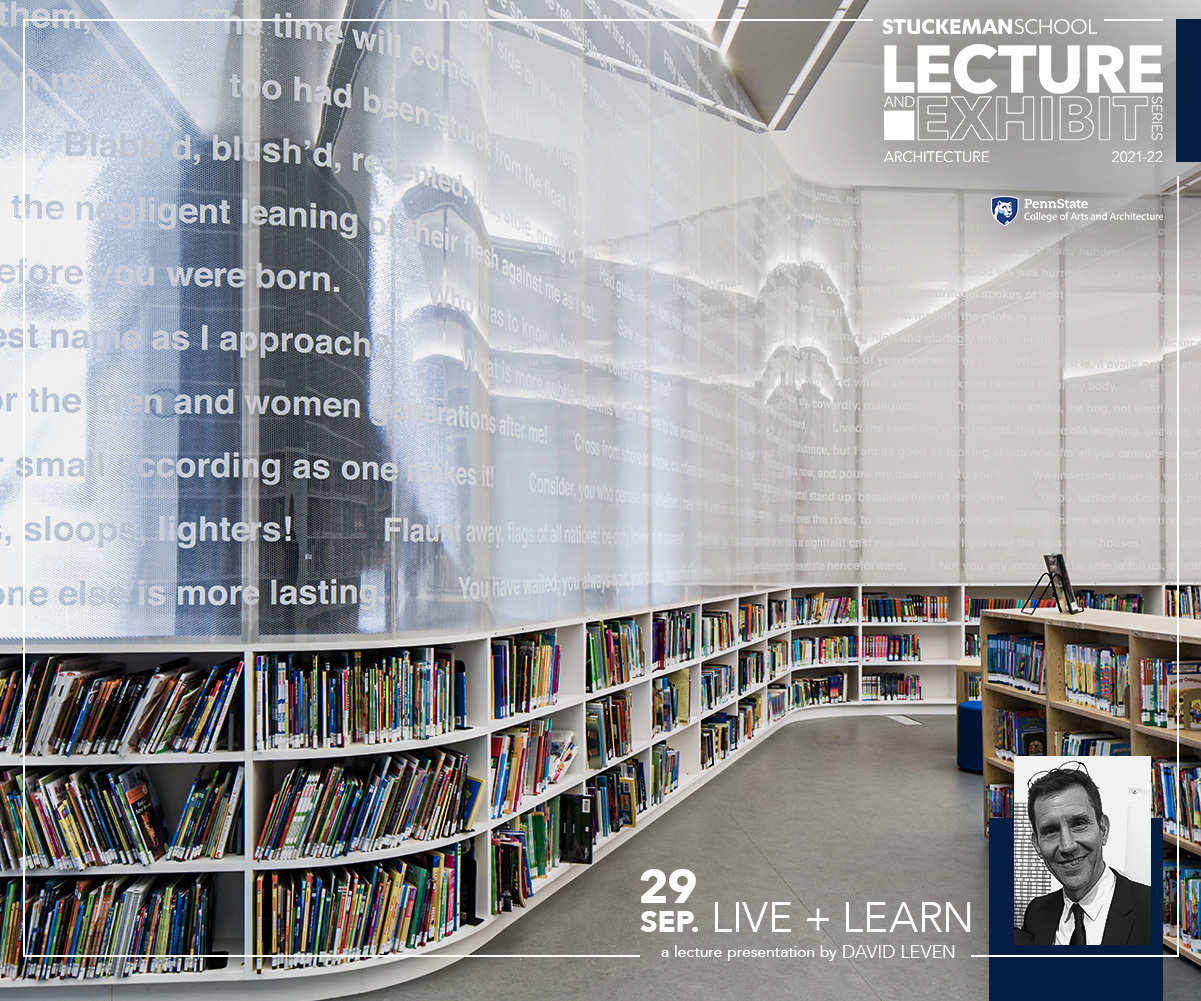Pennsylvania State University
UNIVERSITY PARK, Pa. — A new exhibition that highlights the multidisciplinary work researchers from the Stuckeman School and the College of Engineering at Penn State are doing to create sustainable housing solutions on Earth and beyond by using 3D printing processes will open at 6 p.m. on Nov. 3 in the Willard G. Rouse Gallery as part of the school’s Lecture and Exhibit Series.
Titled “From Earth to Mars and Back,” the exhibition builds on work the research team initiated for the 2019 NASA 3D Printed Mars Habitat Challenge, in which the team — dubbed Den@Mars — finished second. Featured in the show are a collection of images from teaching experiences at the undergraduate and graduate levels, research experiments from different parts of the design and 3D printing processes, and full-scale prototypes of practical applications of additive manufacturing technologies to build concrete structures on Earth and Mars.
Organized by José Pinto Duarte, Stuckeman Chair in Design Innovation and director of the Stuckeman Center for Design Computing, and Shadi Nazarian, associate professor of architecture, the exhibit was curated by Julio Diarte, adjunct lecturer of architecture and a 2020 alumnus of the architecture doctoral program.
“Interdisciplinary research is one of Penn State’s great strengths and this exhibition is an opportunity to take a look inside different aspects of the collaboration between architecture and engineering researchers in the development of technology to 3D print buildings,” said Duarte.
The work displayed in the exhibition showcases the results of research within the Additive Construction Lab, housed in the Civil Infrastructure Testing and Evaluation Laboratory, that focuses on using 3D printing at the construction scale to create sustainable housing options that could revolutionize the construction industry and address larger societal issues, such as homelessness.
From Earth to Mars and Back is free and open to the public and will run through Jan. 19.
Washington University in St. Louis
Climate change, COVID-19, the fight for social justice. In disruptive times, how can architecture help to chart new paths and implement far-reaching solutions?
That’s the question posed by “Disruption,” the 2021 James Harrison Steedman Fellowship in Architecture. The biennial research competition invites early-career architects from around the world to explore how architecture can help to address today’s most pressing global challenges.
The fellowship is organized by the Sam Fox School of Design & Visual Arts at Washington University in St. Louis, in concert with AIA St. Louis, a chapter of the American Institute of Architects. The winning proposal will receive $75,000 to support up to a year of international travel and research.
“Architecture is itself a disruptive force,” said Patty Heyda, associate professor of architecture and urban design in the Sam Fox School and a member of the Steedman governing committee. “Intentionally or not, architecture disrupts sites, ideas and existing paradigms. But today, the world is facing extreme climate, social and ecological breakdown.
“This call is looking for creative research proposals that will help to make sense of the disruptions we’re seeing,” Heyda added, “and define the disruptions we need.”
Established in 1926, the Steedman Fellowship is one of the oldest and most prestigious architectural awards in the United States. Seeking to promote both creative design thinking and cross-cultural exchange, the fellowship is open to practicing architects worldwide—not just those affiliated with the Sam Fox School—who have received an accredited degree in architecture within the past nine years.
Jury and applications
The 2021 competition jury is chaired by Mary Ann Lazarus (WashU alum, MArch78), who also developed this year’s theme.
An internationally recognized leader in sustainable design, Lazarus points out that a major report, issued August 8 by the United Nations’ Intergovernmental Panel on Climate Change (IPCC), found that over the next 20 years, global warming is likely to rise by 1.5 degrees Celsius even with sharp cuts in emissions. To prevent even more catastrophic change, the report continues, nations will need to essentially eliminate all carbon dioxide emissions by 2050.
“Pivoting from current trajectories will require urgent disruption,” Lazarus observed. “Radical solutions are required at all scales and systems. How does architecture—in all its modalities—disrupt and drive change? How can architecture have a measurable impact? What are the disruptions to define the next decade and how will they redefine design?”
Lazarus, who coordinates the Sustainability Program in WashU’s University College, is a consultant at the Cameron MacAllister Group, where she works with design firms to define and develop sustainability and resiliency goals. She also serves on the AIA’s Strategic Council and the AIA Climate Change and Design Excellence Committee. She previously served as firmwide director of sustainable design at HOK and authored the AIA’s Sustainability Leadership Opportunity Scan.
Other jurors include: Shantel Blakely, assistant professor of architecture in the Sam Fox School; Billy Fleming, the founding Wilks Family Director of the Ian L. McHarg Center in the Weitzman School of Design at the University of Pennsylvania; Janette Kim, founding principal of All of the Above and assistant professor and director of Urban Works Agency at the California College of the Arts; and Marsha Maytum, founding principal at Leddy Maytum Stacy Architects in San Francisco.
Application materials will include a portfolio, research proposal, budget and time frame. Extra consideration will be given to creative proposals that minimize carbon footprint. Fellows must be able to complete their projects within 18 months of receiving the award and must be available afterward to share their research with the Washington University and St. Louis AIA architectural communities. There is a $75 application fee to apply.
Proposals are due November 15. For more information, visit steedmanfellowship.wustl.edu.
Illinois Institute of Technology
The Illinois Institute of Technology College of Architecture is pleased to announce an exciting new teaching and research opportunity: the Jeanne and John Rowe Fellows Program, generously funded by Jeanne and John Rowe.
Rowe Fellows will spend two years teaching in the college while they pursue a funded research project intended to advance the study of the built environment across a number of issues, ranging from architecture, urbanism, and landscape architecture, to structures, building systems, professional practice, and more.
At Illinois Tech, the Rowes have supported distinguished faculty, student success efforts, scholarships, and summer learning initiatives. They have also funded several endowed positions in the College of Architecture, including the dean, as well as an endowed chair in sustainable energy.
Applications for the inaugural fellowships are now open, with the selection process beginning in January 2022 for the following academic year. For those interested in applying for a Rowe Fellowship Program, please see the posting at the Association of Collegiate Schools of Architecture website.
Pennsylvania State University
UNIVERSITY PARK, Pa. — New Zealand-born architect, author and scholar Mark Wigley will join the Stuckeman School and the Department of Architecture at Penn State remotely at 6 p.m. on Oct. 6 as part of the School’s Lecture and Exhibit Series. The event is free and open to the public and will be broadcast by WPSU at watch.psu.edu/stuckemanseries.
Wigley is a professor and dean emeritus at Columbia University’s Graduate School of Architecture, Planning and Preservation, where he served as the dean from 2004 to 2014. Prior to his appointment at Columbia, he taught at Princeton University School of Architecture from 1987 to 1999, where he was also appointed the director of graduate studies.
In his talk, titlted “Konrad Wachsmann’s Television: Post-Architectural Transmissions,” Wigley will explore the remarkable career of Konrad Wachsmann, the legendary expert in the industrialization of building that inspired so many architects and remains urgently relevant today. Wigley argues that Wachsmann was really an “anti-architect” who steadily dissolved architecture into flows of information and ultimately into the electromagnetic waves of television. Wachsmann literally engineered clouds, producing beguiling, even hypnotic, structures and revolutionizing the teaching of architecture.
Wigley has written extensively on the theory and practice of architecture and is the author of “Constant’s New Babylon: The Hyper-Architecture of Desire (1998);” “White Walls, Designer Dresses: The Fashioning of Modern Architecture (1995);” and “The Architecture of Deconstruction: Derrida’s Haunt (1993).” He also co-edited “The Activist Drawing: Retracing Situationalist Architectures from Constant’s New Babylon to Beyond (2001).”
In 2005, Wigley co-founded “Volume” magazine with Rem Koolhaas and Ole Bouman as a collaborative project with Archis, a publisher and think-tank in Amsterdam; AMO, a design studio in Rotterdam; and C-lab, Columbia University’s experimental urban and architecture think tank.
Wigley curated the exhibition titled “Deconstructivist Architecture” at The Museum of Modern Art in New York with Philip Johnson in 1988, and others at The Drawing Center, New York; Canadian Centre for Architecture, Montreal; and Witte de With Museum, Rotterdam.
Wigley has several awards to his name including the Chicago Institute for Architecture and Urbanism’s Resident Fellowship, International Committee of Architectural Critics Triennial Award for Architectural Criticism and a Graham Foundation Grant.
Wigley earned both his bachelor of architecture and doctorate from the University of Auckland.
Pennsylvania State University
UNIVERSTY PARK, Pa. — David Leven, co-founder and principal of the award-winning LEVENBETTS architecture practice, joins the Stuckeman School at 6 p.m. on Sept. 29 in the Stuckeman Family Building Jury Space as part of the School’s Lecture and Exhibit Series. The event, which is free and open to the public, is being produced and broadcast by WPSU at watch.psu.edu/stuckemanseries for those who wish to view the lecture remotely.
In his talk titled “Live + Learn,” Leven will focus on living spaces and learning spaces, primarily in the architectural types of the house and the library, in the work of LEVENBETTS.
LEVENBETTS was established in 1997 by Leven and Stella Betts in New York City. The duo originally trained as artists and fabricators, and thus bring an extraordinary sense of craft and care to how their buildings are made. They are both teachers of design and partners in life, as well as work.
Central to the LEVENBETTS practice are the values of equity, dignity, sustainability, and an integrity of material practice and social responsibility. The firm’s depth and breadth of practice can be seen in all its work — from “Zoid,” an intimately sheltering 2019 sculptural installation at Art Omi in New York’s Hudson Valley, to the Taystee Building, an innovative 300,000-square-foot building in Harlem that was awarded through the New York City Economic Development Corporation.
LEVENBETTS has received numerous honors over the years and was recognized with the American Institute of Architects (AIA)/AIA New York State Firm of the Year honors in 2020. The practice has been honored by the Architectural League of New York for the 2009 “Emerging Voices” series, Architectural Record’s 2007 Design Vanguard and the 2003 Young Architects forum. It has received six New York City AIA awards for significant projects and its work has been exhibited and published worldwide.
In addition to professional practice, Leven is currently a professor of architecture at Parsons School of Design where he served as the director of the architecture graduate program from 2008 to 2012. He has also taught at the Bernard and Anne Spitzer School of Architecture at the City College of New York, the School of Architecture at Syracuse University and the College of Architecture, Art, and Planning at Cornell University.
Leven has served as a guest critic and studio review juror at Yale University, Harvard University, Princeton University, University of Pennsylvania, Cornell University, Penn State, Pratt Institute and the Southern California Institute of Architecture, among others.
In 2018, Leven was named an AIA Fellow, the organization’s highest membership honor, for his “exceptional work and contributions to architecture.” He is the vice president of professional development of the AIA New York City chapter and is a licensed architect in New York and New Jersey.
Leven earned his bachelor’s degree from Colgate University and his Master of Architecture from Yale University’s School of Architecture. He also studied at the Institute for Architecture and Urban Studies in New York, and apprenticed with the performer-artist-architect Vito Acconci.

 Study Architecture
Study Architecture  ProPEL
ProPEL 





